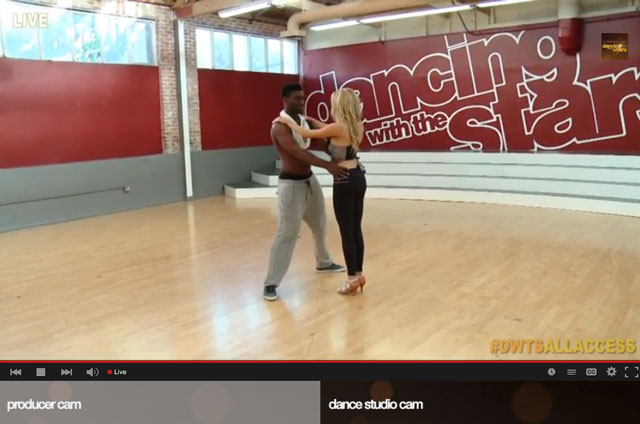The other day Wendy and I were talking with another instructor about the changing dance environment. As many people know, real estate prices, especially in Vancouver, have driven ballrooms to be sold over the past few months. Only one of five popular Vancouver area ballrooms is still active in the normal sense of the word. This has led to an interesting challenge: our once well-connected dance community has become fragmented.
There are still dancers, but not in the same numbers and they aren’t communicating the way they were in the past. They don’t have a few common places where they see each other regularly. Instead, they get together in much smaller environments, rarely seeing the community as a whole the way they used to. Even dance competitions are lacking the numbers we once enjoyed. Competitive skill levels that saw 20-30 couples participating just a few years ago might see only 3-4 couples today. Even championship level events may have only a single couple on the floor.
What about the impact of television?
One thing that puzzles many dance teachers is why television shows like Dancing With the Stars have not produced the results that most instructors had been expecting when those shows first launched. What gives with that?
Coming up in a few weeks is the tenth anniversary of Dancing With the Stars. The show is immensely popular. Last season’s finale was one of the most watched television shows of all time. We’ve had other shows like So You Think You Can Dance also highlighting the ballroom dances. So why have these shows not produced tons of new dance students in our ballrooms?
A little history
The original version of Dancing With the Stars has been running in England for decades. Called Strictly Come Dancing, the show hasn’t wavered in popularity. The reason may be quite understandable. England brought ballroom dancing to the world stage in the 1940s. Blackpool is the world’s oldest and most prominent dance competition. British instructors refined the dances we perform today, and meticulously wrote out every step in the technique books that are used by dance teachers around the world. In short, ballroom dancing is ingrained in England’s culture.
In most of Europe people begin ballroom dancing at a very young age. They often start at just five or six years. Boys and girls equally get involved. By the time they reach their teens they decide whether not to carry-on with competitive skill levels, and by then they’ve had a decade of experience and training. Although the majority don’t pursue it that seriously, even the most casual European dancers are still better than most North Americans. That’s because in our continent most people don’t begin dancing until well into adult life. Even after years of training, they are only reaching the skill level most Europeans achieved in their youth.
And there are many times more dancers in Europe than in North America. In Germany, with a population half that of the USA, there are nearly 20 times the number of dance competitions. In the city of Moscow alone, there are 10,000 registered ballroom dance competitors, about the number found throughout all of North America.
The psychology of learning
In Canada and the USA, men in particular are unfamiliar with the idea of ballroom dancing and do not generally see themselves as dancers. When they see ballroom dancing, even when performed by sports figures who have never danced before, their lack of confidence in their own ability keeps them from imagining that they could do something similar.
Most men want to see themselves as winners. They are wired with an ego that has a need to master things and come out on top of the challenges they face. Dance can be one of the most daunting challenges. Unless there’s an exceptional payoff, there’s no compelling reason to start something that might not achieve a victorious outcome.
The other problem
This brings us to the other problem with these dance shows. They don’t depict the real picture of what ballroom dancing is. In fact, they take that whole male anxiety of not being able to live up to expectations to a whole new level. What male, already lacking confidence in his dance ability, can imagine himself dancing as well as “those guys”? So You Think You Can Dance makes even experienced dancers feel that these competitors are almost super human, having skills normal people can’t even come close to achieving.
On these television shows, you don’t see guys going through the normal stages of learning beginner steps, then Bronze steps, then Silver steps, etc. Instead you see guys jumping right to Championship level expectations in almost no time at all!
Wendy and I love Dancing With the Stars because it’s fun to see people try something out of their comfort zone and get good at it. But the dancing on that show is not realistic. It’s designed for television. These competitors aren’t taught to lead someone on the dance floor as much as they are taught to dance specific step patterns to carefully selected musical choices.
 A few days ago, Wendy and I watched a live training session for the new season. ABC has added this new feature where you can actually watch a lesson happening live on your computer or mobile device. It’s pretty cool. These competitors are working with their trainers for several hours every day. That’s not the way normal people learn to dance, another reason why the show builds unrealistic expectations.
A few days ago, Wendy and I watched a live training session for the new season. ABC has added this new feature where you can actually watch a lesson happening live on your computer or mobile device. It’s pretty cool. These competitors are working with their trainers for several hours every day. That’s not the way normal people learn to dance, another reason why the show builds unrealistic expectations.
No wonder ballrooms all over the continent aren’t filling up with new dance students.
Fortunately in Delta we’ve experienced a surprisingly high number of men who have what it takes to learn to dance. Many weeks we have more men in our classes than women. It’s encouraging to see that gentlemen want to master this incredible life skill. Delta has real men.
Advice for women
Invite your male friends to attend free events or beginner classes. There are occasional free lessons and introductory dance events around the lower mainland. Help them break the ice by dancing with them or inviting a female friend to partner with them at these events or at a beginner class. Be patient with the men you partner. They are probably still struggling with musicality and basic step patterns, so putting extra stress on them will only drive them to give up rather than mastering it. Encourage them by recognizing key breakthroughs so that they can see progress. Work on simple steps and forget about the more challenging ones at this stage, so that your male partner gains confidence.
Advice for men
Women don’t generally have the cultural barriers that men feel about ballroom dancing, so you shouldn’t have any trouble inviting women to dance with you. But be patient with them. Some ladies will prefer the Standard dances and others will prefer the Latin. Give them a chance to experience the style they like best, even if it isn’t your favorite. As they get more experienced, they generally want to explore the other styles. Work on your musicality by listening to music to become familiar with the count and character of different songs. Above all, let your lady dance. Don’t limit her by focusing on too much technical detail or stopping every time something doesn’t feel right. Women want to dance, not be mired in details of exact footwork.











